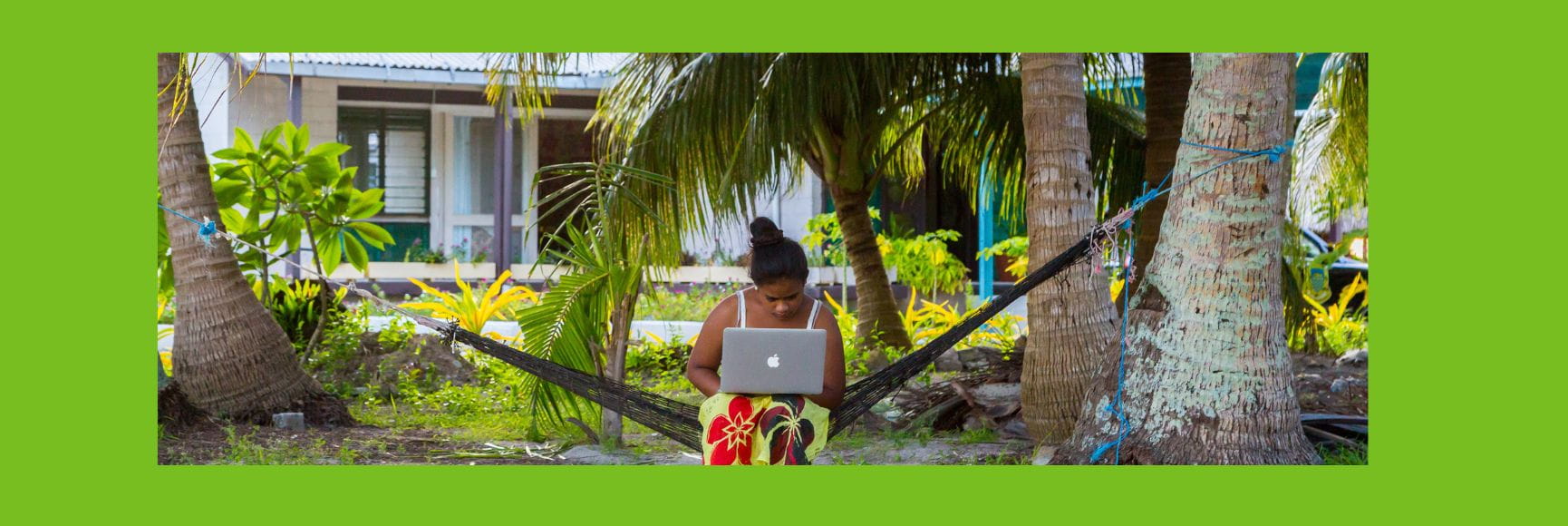Pacific Island Countries are among those that are the most highly exposed and vulnerable to the impacts of natural disasters and climate change. As a group they face huge adaptation costs, that the IMF estimates will average at between 6-9 percent of GDP[1] annually, amid elevated levels of debt.
Gender inequality in Pacific Islands Countries also remains a significant challenge, that has been further exacerbated by the pandemic. A recent World Bank study finds that on average, long run GDP per capita would be around 22 percent higher in Pacific Island Countries if gender employment gaps were to close.[2] Yet, gender disparities in labor force participation and political decision-making, and the instance of gender-based violence are significant. Representation of women in national parliaments is at around six percent on average in nine Pacific Island Countries, while globally women represent 26 percent of members of legislatures.[3] Violence against women and girls in Pacific Island countries is among the highest in the world - about twice the global average, with up to 68 per cent of Pacific women reported experiencing physical or sexual violence.[4]
A recent 4-day Pacific Regional workshop on “Harnessing the Opportunities of Green and Gender Budgeting” hosted by the IMF’s Fiscal Affairs Department and its Pacific Financial and Technical Assistance Centre (PFTAC) helped participants understand how green and gender budgeting can help bring a climate and gender perspective to expenditure and revenue policies. [5]
Gender budgeting recognizes that government budgets impact men and women differently – and is an important instrument that governments have at their disposal to advance gender equality. Green Budgeting is integration of a climate-friendly perspective into PFM practices, systems, and frameworks.
Despite the growing international recognition of the value of Gender and Green Budgeting, both practices have so far remained underutilized and are largely embryonic in the region. Fiji and Timor-Leste are notable exceptions and have made considerable progress on gender budgeting reforms in particular, but following different pathways. Fiji has made rapid progress in a short time, being inspired by the 2019 Gender PEFA[6] and benefiting from the support of the Parliament, who incorporated gender analysis into its standing orders, the rules used to manage the work of the Parliament. Timor Leste has been working on gender budgeting reforms for the last 10 years or more but political leadership is a critical factor for success.
Over the course of the 4-day workshop, participants were able to explore the opportunities for integrating a gender and green perspective into their national budget processes through a combination of interactive lectures, case studies, and exercises. The workshop introduced the IMF Gender Budgeting Framework, the IMF Green PFM Framework and highlighted specific tools that offered straight forward entry points to support the integration of climate and gender perspectives into the budget decision making process. Options explored included strengthening the budget decision making process; considering how to identify and tag gender and climate related spending; and how to transparently present the range of activities and the government is implementing to address climate and gender challenges by developing a Green or Gender Budget Statement.
Both Green Budgeting and Gender Budgeting help to prioritize policies within a budget constraint, analyze and measure their intended impact and inform decisions about resource allocation. It improves existing programs by making them more gender inclusive and climate friendly, while measuring their performance and effectiveness.
Globally, countries are recognizing the value in bringing a green and gender perspective together in the budget process, given the considerable synergies in approach and complementarity of various tools. In the Caribbean, the Turks and Caicos Islands have decided to adopt gender and green budgeting concurrently. Conversely, in Burkina Faso, lessons from gender budgeting reforms since 2019 have helped kick start climate budgeting in 2023.
Green Budgeting and Gender budgeting are actually just good budgeting – the kind that is needed to help government prioritize and confront challenges of climate vulnerability and gender inequality. In a world where many countries are grappling with increasing exposure and vulnerability to climate change, and at the same time recognizing the role that inclusive growth can play in making everyone better off -- these questions of where money is being spent, whether polices are working and whether they have impact – are questions of good PFM.
[1] International Monetary Fund (IMF). 2021a. “Fiscal Policies to Address Climate Change in Asia and the Pacific.” IMF Departmental Paper, Washington, DC.
[2] A Gender Employment Gap Index (GEGI): A Simple Measure of the Economic Gains from Closing Gender Employment Gaps, with an Application to the Pacific Islands, Steven Pennings.
[4] Ending Violence Against Women and Girls | UN Women – Asia-Pacific, accessed April 2024 - https://asiapacific.unwomen.org/en/countries/fiji/ending-violence-against-women
[5] The workshop had 40 participants from ministries of finance and the donor community and representation from 13 of the 16 PFTAC member countries. The IMF team of trainers consisted of Gemma Preston, Paul Seeds, Iulai Lavea, Kris Kauffman, and Maja Bosnic. .
[6] The Public Expenditure and Financial Accountability (PEFA) supplementary framework for assessing gender responsive public financial management (GRPFM) It collects information on the degree to which a country’s public financial management (PFM) system addresses the government’s goals with regard to acknowledging different needs of men and women and promoting gender equality.






